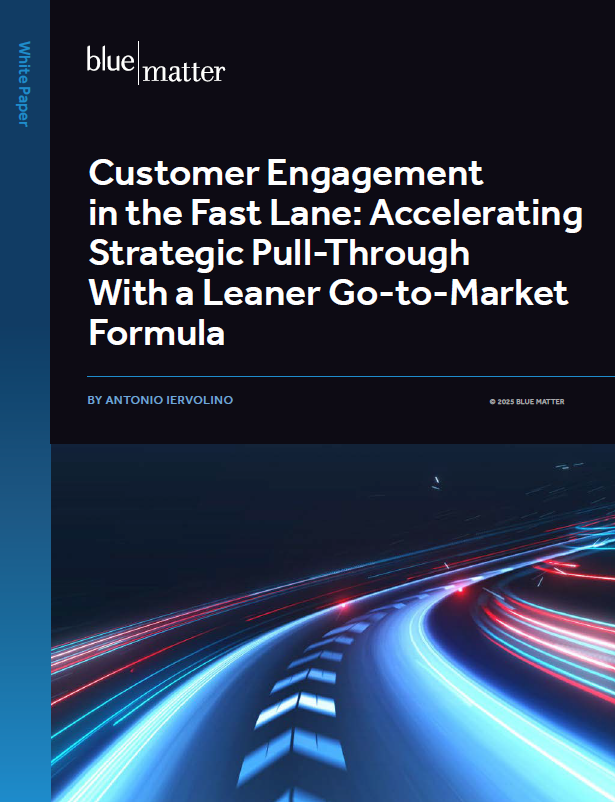
Why a Europe-Tailored Strategy is Important
When a biopharmaceutical company decides to enter the “European market,” it’s important to recognize that Europe is not really a single market. Aside from having the European Medicines Agency (EMA) as common regulatory body, the European Union (EU) is actually a combination of 27 markets, each with a differentiated healthcare decision making system. That’s a diverse collection of markets, and when one layers in key non-member states that are not covered by the EMA, it becomes even more so.
Companies that plan to enter Europe must deal with this reality. Consider the perspective of a US-based company that is mainly familiar with the US market. It could be very tempting to leverage its US-centric strategy to enter Europe. After all, it has likely worked to address 50 individual states already, at least on some level. However, while the US states are in many ways diverse, there is still a significant amount of cultural homogeneity, only one currency, and a common regulatory regime.
Things are quite different and more complex in Europe. Clinical data that satisfies the US Food & Drug Administration (FDA) may not satisfy the European Medicines Agency (EMA). Value propositions that resonate with public and private payers in the US may not be appropriate for the patchwork of payer decision makers across Europe.
The differences go beyond regulatory and reimbursement issues. They extend into how companies can interact with their ultimate customers, the patients themselves. In Europe, for example, opportunities to directly engage patients are far more restricted than they are in the US. Direct-to-Consumer (DTC) advertising is prohibited, so companies must leverage other ways to connect. Because of this, patient advocacy groups are relatively more important across European markets. Of course, there are countless additional nuances between the US and Europe (and between individual European markets themselves), but these few examples make the point.
The key takeaway is this: An EU-tailored strategy that accounts for the differences between individual European markets is a must. Companies that don’t properly account for the realities of Europe are setting themselves up for sub-optimal performance at best and failure at worst. In this article, we’ll highlight some key suggestions for companies to consider as they devise their European strategies.
Define Priority Markets and the Optimum Launch Sequence
It’s a fact of life that resources are limited. No company has unlimited time, personnel, or money. So, it always makes good business sense to invest those limited resources in things that are most likely to drive the greatest marginal returns and protect and maximize the value of its products. This is the key reason no company has ever attempted to launch into all European markets at once.
Europe is interesting in that a company needs to use a balanced approach between entering the biggest markets first versus those markets that are key to protecting or improving an asset’s value. The basic goal is to ensure optimal pricing and reimbursed population in the major markets—then the wider region—while minimizing the time to market. The differentiated payer environments and processes, as well as other factors, mean an optimal European launch doesn’t just relate to what happens in each individual market, but also when launches happen relative to each other. A company must use a disciplined and strategic process for prioritizing markets and planning its launch sequence.
To identify top priority markets, companies should conduct a high-level comparative analysis across a range of markets. The purpose is to identify those key markets that have the best combinations of factors (market size / numbers of patients, unmet needs, favorable competitive situations, favorable reimbursement environments, and so on). A structured analysis is needed, as the outputs can vary considerably based on the disease in question. However, most outputs involve some combination of the top 5 European markets (Germany, France, Italy, Spain, and the United Kingdom).
Launch sequence is mainly driven by the use of reference pricing by many European national payers. National payers will often determine pricing for a product—in part—by referencing the price of that product in a basket of other European countries. If a company first launches an asset into lower-priced reference countries, then it’s likely to get lower pricing in subsequent markets that use the initial ones as references. This can cost a company hundreds of millions of Euros over time, and significantly hamstring a product’s long-term market value. For this reason, many companies look to Germany as their first market. In Germany, a company is allowed (for the first year after launch) to price a product based on its own assessment of competitive differentiation and value.
Companies must also take into account the time it takes to obtain reimbursement in different markets. For example, in Germany, companies can launch almost immediately after EMA approval. In France and Belgium, reimbursement can take considerably longer.
Another consideration, especially, for products focusing on areas with significant unmet needs, is where and how to establish early access programs. While this topic will be covered in a separate article, in summary, these programs enable companies to get their products to patients before reimbursement approval. There are many advantages to this for patients, healthcare providers, and companies. Putting these programs in place requires early and active engagement with individual countries and can be a big factor in launch sequencing.
Ultimately, a company must weigh the trade-offs between a speedy launch in certain potentially large markets against the pricing damage that might occur later. Doing this can involve complex analyses but is definitely worth it given the stakes involved.
Globally Develop the Pivotal Study and Brand Strategies
When it comes to developing the pivotal study and brand strategy, there are two basic situations: The ideal situation and the typical situation. Here, we’ll describe both of them. The typical situation is preferably avoided. However, if a company finds itself in the typical situation, then all is not lost. There are still options for moving forward.
The Ideal Situation
In the ideal situation, a company’s global organization will coordinate development of the pivotal study and the initial brand strategy early. During this process, the global organization will heavily leverage input from key local markets to ensure the strategy resonates for as many as possible. Those markets might include the US, key Asia-Pac nations, and (of course) the company’s priority European markets.
Across these priority markets, it’s important to start the process by mapping out a range of factors that will inform the design of pivotal studies as well as the global commercial strategy (and its local components). These include:
- Unmet needs in each marketplace
- Data needs and analyses required for regulators and payers
- The current and future market environments, including the competitive situations and related “healthcare ecosystems”
The research to capture all of this local information could ideally be well underway 6-12 months prior to confirming the design of a pivotal / registrational clinical trial (whether it’s a phase 2 trial seeking conditional EU approval or a full phase 3 study). Once in hand, this information should guide creation of the global clinical development and commercial strategies. It will also guide development of local strategies and budgets.
The degree to which this process is directed by the global organization can differ, and it really depends on whether the company has more of a “top-down” or “bottom-up” culture. Regardless of how it’s done, the desired result is an aligned global strategy that applies to all major markets and provides the necessary clinical data, measures, etc. that are required to satisfy regulators, payers, and other key stakeholders.
The Typical Situation
Alas, in the real world, the “ideal situation” is a rare thing, indeed. In reality, a company often only really focuses on the EU markets after pivotal study design, as it begins to expand its thinking beyond the US and starts to put EU resources in place. The first market research typically takes place only 1.5 to 2 years before a first planned launch rather than 6 to 12 months before pivotal study design, as described above.
At that point, the company’s decision makers often come to a disturbing realization. More than one CEO has uttered these or similar words in the past: “Yikes! We need all these specific data analyses to succeed in Europe, and our studies just aren’t set up to enable them!”
One can imagine that the next statement is something like, “What do we do now?” as the discussion turns to how to make the best of the existing situation. In the simplest sense, “making the best” of it involves a three-step process:
- Perform a gap analysis – This involves a systematic approach to identifying the data and analyses that are needed for a successful launch, comparing the needs to what the current situation is capable of delivering, and identifying the gaps between the two.
- Develop a gap mitigation plan of action (POA) – This is a plan to “fill the gaps” and help get to a successful approval and launch. Like any other plan, this needs to call out specific actions and deliverables, identify the personnel responsible, establish timelines, and include a budget. Interventions might include identifying various sub-group analyses that could be accepted by regulators or payers or even updating the pivotal study protocol, if necessary.
- Implementation – Step 3 is a pretty simple concept to grasp: Put the plan into action and make it happen.
Systematically Gather Market Data and Generate Strategic Insights
Regardless of whether a company is in the “ideal” or “typical” situation, it will—sooner or later—need to collect important information from the EMA and from priority markets and generate strategic insights. These insights will either be used to support development of the pivotal study and commercial strategies or to amend them.
From the EMA, a company should gather information regarding submission requirements. The EMA can provide valuable feedback regarding pivotal study design, clinical endpoints, and the data needed for a successful submission. Some of the other key topics that a company must address were alluded to earlier, but are related here in more detail:
- Market Access Requirements – Input from national payers on how they measure value, clinical comparators, trial endpoints and data needs, as well as input on the early target product profile
- Disease Epidemiology and Current Patient Flow – Information on the number of treatable patients per market and how many move through the different lines of therapy
- Patient Journey – Insight into how patients experience treatment today, who they interact with, and what drives decision-making
- Patient Identification and Current Standard of Care – Insight to diagnosis / testing, current therapies, and unmet needs
- Competitive Environment – Insight into current therapies and when new entrants can be expected by patient segment
- KOL and Influencer Networks – Identification of the leading clinicians that could support clinical trials and medical activities
- Operational Needs – Requirements to ensure the product can launch Day 1 e.g., Legally required roles and processes, finance set-up, EU supply/distribution model options, and so on
To gather all of this information in a timely manner—and derive actionable insights from it—a company must start early and have a systematic plan of action. Developing this plan requires careful thought, and a simple strategy framework can often be helpful. However, we can place the major milestones in chronological order for reference. This list is highly generalized and reflects the ideal situation:
- Initial European Market Analysis and Prioritization (6-12 months before pivotal trial design)
- Pivotal Trial Design
- Pivotal Trial Launch
- Full Situation Analysis for Priority Markets (e.g., unmet needs, treatment flow, patient journey)
- EMA Engagement Plan and Submission Planning
- Payer Engagement Plan and Initial Payer Engagement (Priority Markets)
Conclusion
Clearly, Europe is not a country. That’s a basic geopolitical fact, and US-based companies that enter Europe absolutely know it. However, the temptation is often great to act almost as if Europe is a single country, with the individual nations being as little different from one another as US states. This is a dangerous temptation that can lead companies to underestimate the time and effort required, move forward with limited information, and severely jeopardize asset and corporate value in the process.
Companies that invest in understanding Europe—as a whole and as individual markets—and that adopt a strategic approach to market prioritization and planning, are much more likely to succeed. The key points to remember are to be systematic in gathering information, think strategically in prioritizing markets and defining launch sequence, and…this is critical…start early.
Blue Matter Expert Contributors:
- George Schmidt
- Theofanis Manolikas





